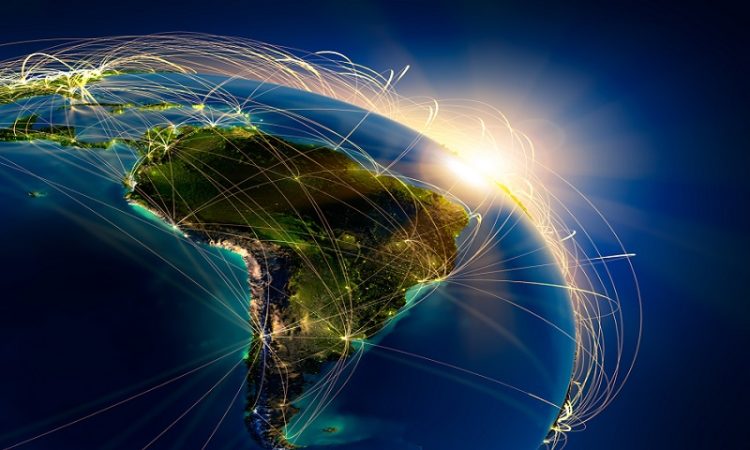Mexico has generations of rich culture and proud heritage. The people from these regions are hard-working, family-oriented, and largely religious. Interestingly Mexico ranks 5th on Geert Hofstede’s Power Distance Index (PDI). Hofstede’s PDI indicates the extent to which a society accepts that power in institutions and organizations is distributed unequally” (Neil R. Abramson, 2018) Mexico is also the region where the currently accepted term of “cartel” was developed. The word cartel originated in ancient times and has evolved, as many words do, to today’s currently accepted meaning which describes “an organization created from a formal agreement between a group of producers of a good or service to regulate supply in order to regulate or manipulate prices” (Chen, 2021). Is it coincidental then that Mexico with its high PDI placement is home to the largest number of and most organized drug cartels or is there a correlation between the high PDI and the number and proficiency of these cartels?
Power Distance Index as mentioned above is the propensity for individuals to accept an imbalance of power. The higher a country scores on the index the more inclined the individuals are to accept the imbalance. Inversely the lower a country scores on the index the less inclined the individuals are to accept an imbalance of power. For example, Malaysia scores the highest on the index with a PDI of 104 while Austria scores the lowest with a PDI of just 11. Comparing these two country’s ideals as it relates to power distribution, we would expect that the citizens of Austria would have an exceptionally strong belief in equality for each citizen. (Clearly Culture, n.d.) Whereas Malaysia’s government is a federal parliamentary constitutional monarchy, and all Malaysian states, except two, have hereditary rulers known as sultans. (CIA, 2021) Malaysian citizens accept that they have very little if any power with most if not all of it concentrated at the top. Mexico scores a PDI of 82 yet their government, being a federal presidential republic, is vastly different than Malaysia’s, and yet still the Mexican people inherently accept that they have very little power control.
The basic structure of Mexican drug cartels is composed of 4 levels of member ranking. At the lowest level is the Halcones or “the eyes and ears”, next is the Sicarios or “the hitmen”, after that is the Tenientes or “middle management”, and finally at the top is the Capos or “the senior leadership”. (Wikipedia, 2021) While there are of course other roles within these organizations the basic structure outlined helps to define a hierarchy in which we can use to observe the power distribution. Using the Zetas as an example, which are the largest cartel in Mexico, they employee a method of franchising of their name or brand with local criminals. (Wainwright, 2016) This distributed method of ownership ensures that low-level criminals are extremely far removed from any involvement in the core of the Zetas business. Thus, this organizational model follows the high PDI paradigm with which Mexico is associated.
Overlay the decentralized organizational model which cartels use to run their business, onto a country that scores a high PDI and you end up with a recipe for nefarious success. While there has not been extensive peer-reviewed research on the connection between a high PDI and organized crime, the association is real and well perceived. Ratings of power distance index and corruption index of countries show a high correlation. Further, the countries that have high power distance are typically more corrupt. (RAGHUNATHAN, 2011). The fact is that it is not coincidental that some of the largest and most powerful cartels on earth originated in a country with a high PDI. It was and is still a perfect situation for these organizations to operate and exist with near immunity. Unless and until the PDI changes in the opposite direction, syndicated organized drug cartels will continue to operate successfully on Mexican soil.
References
Chen, J. (2021, July 21). Cartel. Retrieved from Investopedia: https://www.investopedia.com/terms/c/cartel.asp
CIA. (2021, October 20). Malaysia. Retrieved from CIA World Factbook: https://www.cia.gov/the-world-factbook/countries/malaysia/#government
Clearly Culture. (n.d.). Making Sense of Cross Cultural Communication. Retrieved from Clearly Culture: https://clearlycultural.com/geert-hofstede-cultural-dimensions/power-distance-index/
Neil R. Abramson, R. T. (2018). Managing Cultural Difference, Tenth Ed. New York: Routledge.
RAGHUNATHAN, V. (2011, June 25). Power distance index and corruption. Retrieved from The Economic Times: https://economictimes.indiatimes.com/opinion/et-commentary/power-distance-index-and-corruption/articleshow/8985180.cms
Wainwright, T. (2016, February 15). ‘Narconomics’: How The Drug Cartels Operate Like Wal-Mart And McDonald’s. Retrieved from NPR: https://www.npr.org/2016/02/15/466491812/narconomics-how-the-drug-cartels-operate-like-wal-mart-and-mcdonalds
Wikipedia. (2021, October 7). Drug Cartels. Retrieved from Wikipedia: https://en.wikipedia.org/wiki/Drug_cartel










